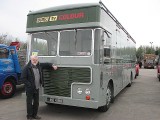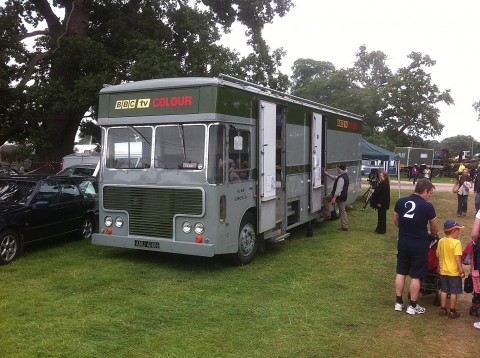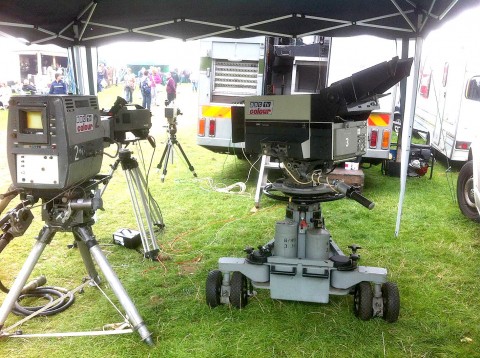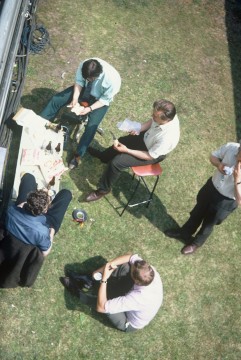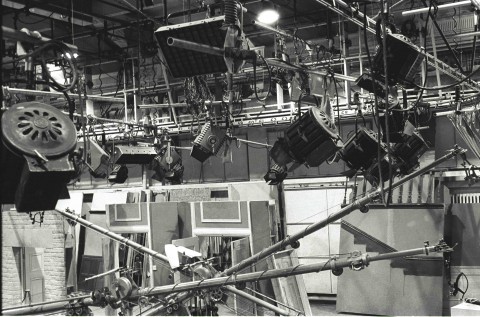North 3 Wins an “Oscar”
The last BBC Type 2 colour scanner still on the road, CMCR9/North 3, has won an award. The Duncan Neale Award for Excellence in Preservation has been awarded by the British Vintage Wireless Society to Steve Harris, the owner of the restored LO5 / Midland / North 3 OB unit CMCR9, which entered service in 1969. Steve’s self-effacing acceptance speech lavished praise on his small team of dedicated volunteers and their multifarious talents, but not mentioned was his own multi-skilled determination without which the North 3 Project would never have got off the ground.
Steve and his team spent the winter getting ready for the new show season and preparing new treats for the visitors. October saw Steve H produce the first pictures for many years from a 44 year old EMI 2001 camera and December saw the first powering-up by Steve Jones of a very rare Philips PC80 camera originally from North 1/CMCR7. Richard Ellis, former Chief Engineer of Pye TVT Ltd has restored to full operation the original Pye sync pulse generators which he designed back in the 60s. This involved finding equivalents and replacing more than 100 discrete transistors.
Meanwhile, Eric Hignett has been building an amazing generator, powered by a Ford Transit diesel engine. In ‘proof of concept’ form, this was a real Heath Robinson affair on a trailer, with a motor-bike silencer and speed maintained by a modified cruise control for a car. It worked and the first run, apart from producing a tremendous amount of noise, delivered 40 amps at 230 volts, which powered three aircon units and other auxilliaries in North 3, all electronics being kept well away from this unproven beast for the test run. Eric went away to scratch his head, refine the design and try to make it produce less noise!
North 3 was booked at the time of writing to take part in the Cheshire Commercial Vehicle Run on 27th April starting at Lymm Truckstop on the M6. This is a trip of over 100 miles. The first public show this year was at the Llandudno Transport Festival on 3, 4 and 5 May, followed by the Kelsall Steam and Vintage Rally at Kelsall near Tarvin, Cheshire, on 21and 22 June.
Kelsall is a special event for ERF vehicles, originally manufactured at nearby Sandbach, as it marks the 25th anniversary of the enthusiasts’ club. Steve is hoping to take his latest acquisition, ex-BBC Type 7 scanner LO23, (an ERF E6) to display alongside North 3. Restoration has not yet started, so it will be just as it was when rescued from imminent destruction at a scrap yard following decommissioning by SIS.
Later in the summer we expect North 3 to be at the Wilmslow Show in July and the highlight of the season will be another appearance at the popular Onslow Park Steam Rally near Shrewbury over the August Bank Holiday weekend.
Jerry Clegg
(This article is due for publication in Prospero’s June edition)
The following comment was posted on the Pebble Mill Facebook Page:
Keith Brook (Scouse): ‘Of all my memories of that scanner, I think having so much fun with the riggers was the best. They really were the salt of the earth.’
